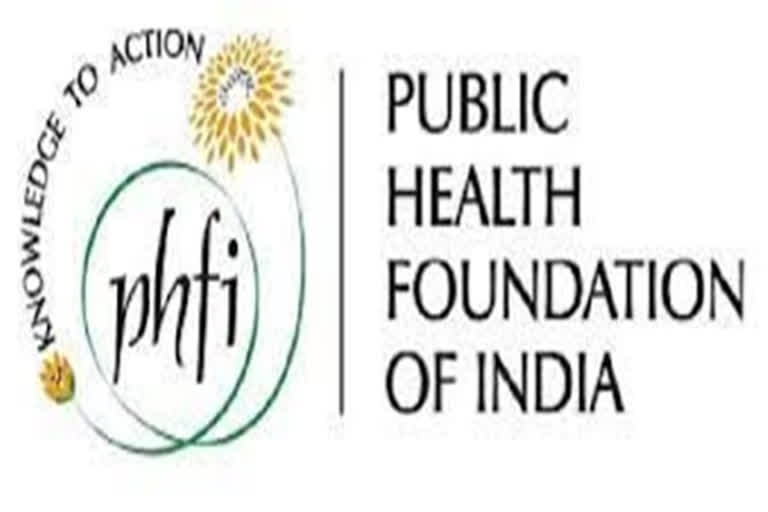New Delhi: At a time when India is fighting against the COVID-19 pandemic, two scientific studies on child survival have shown that with the various governmental and other efforts, under-five mortality rate has marked a wide variation from 2000 to 2017.
The study was done under the India State-Level Disease Burden initiative. Launched in 2015 as a collaborative effort between the Indian Council of Medical Research, Public Health Foundation of India, Institute for Health Metrics and Evaluation, and other key stakeholders, over 300 prominent scientists and experts representing about 100 institutions across India were engaged with the study.
“Comparison of child mortality trends in each of the 723 districts of India with the National Health Policy and SDG targets has identified the districts with a high gap where more targeted attention is needed. Bringing down death numbers among newborn babies in the first month of life by addressing specific causes of death is crucial,” said Prof Rakhi Dandona, Professor at the Public Health Foundation of India exclusively to ETV Bharat.
He said that malnutrition continues to be the leading risk factor for child death across India.
“Low birth weight is the biggest component of this risk factor. Focus on maternal nutrition during pregnancy needs to be a priority to improve the birth weight of babies. The health system needs to track every pregnant woman and every newborn effectively to substantially reduce child deaths in India,” said Prof Dandona.
The analytical methods of this study have been refined over two decades of scientific work, which has been reported in over 16,000 peer-reviewed publications, making it the most widely used approach globally for disease burden estimation.
These methods enable standardized comparisons of health loss caused by different diseases and risk factors, between different geographies, sexes, and age groups, and overtime in a unified framework.
Prof Vinod Paul, NITI Aayog member, said, “These research findings have shown that India has made positive strides in protecting the lives of new-borns over the last two decades. Introduction of contextually relevant multi-sectorial actions by the Government of India and the state governments like maternal nutrition programmes during pregnancy, access to skilled health providers during childbirth, and family and community-based care through postnatal home visits have shown to have made a difference.”
ALSO READ: Air India HQ sealed for two days after employee tests positive for coronavirus
According to the study, under-five mortality rate (U5MR ) in India reduced by 49 percent from 83 in 2000 to 42 per 1000 live births in 2017, and neonatal mortality rate (NMR) reduced by 38 percent from 38 to 23 per 1000 live births during this period.
There were 1.04 million under-5 deaths in India in 2017, of which 0.57 million were neonatal deaths, down from 2.24 million under-5 deaths including 1.02 million neonatal deaths in 2000.
The highest number of under-5 deaths in 2017 were in the state of Uttar Pradesh (312,800 which included 165,800 neonatal deaths) and Bihar (141,500 which included 75,300 neonatal deaths).
U5MR and NMR was lower with the increasing level of development of the states. In 2017, there was 5.7 fold variation in U5MR ranging from 10 per 1000 live births in the more developed (high SDI) state of Kerala to 60 in the less developed (low SDI) state of Uttar Pradesh, and 4.5 fold variation for NMR ranging from 7 per 1000 live births in Kerala to 32 in Uttar Pradesh.
The District-level child mortality U5MR varied 10.5 times between the 723 districts of India in 2017, ranging from 8 to 88 per 1000 live births, and NMR varied 8.0 times, ranging from 6 to 46 per 1000 live births. The highest district-level U5MR and NMR in 2017 were comparable to the highest rates globally among some Sub-Saharan Africa countries.
In Uttar Pradesh, which had the highest child mortality rate in 2017 among the states, the districts in the highest priority category of high NMR and U5MR and low annual rate of reduction included a cluster of eight districts in the north-central part (Bahraich, Balrampur, Barabanki, Gonda, Hardoi, Kheri, Shravasti, and Sitapur), three districts in the south (Allahabad, Banda and Chitrakoot), and Lalitpur district in the south-west corner of the state.
Significantly, if the trends up to 2017 were to continue, India would not achieve the National Health Policy (NHP) 2025 U5MR target of 23 per 1000 live births or the NHP 2025 NMR target of 16 per 1000 live births. With these trends, India would achieve the sustainable development goals (SDG) 2030 U5MR target of 25 per 1000 live births but not the SDG 2030 NMR target of 12 per 1000 live births, the findings said.
Lower respiratory infections (17.9 percent), preterm birth (15.6 percent), diarrhoeal diseases (9.9 percent and birth asphyxia and trauma (8.1 percent) were the leading causes of under-5 death in India in 2017.
According to the study, priority districts for child growth failure reduction were identified within states as those that fell in the category of high prevalence of stunting, wasting or underweight in 2017 and low annual rate of reduction from 2010 to 2017 for their distribution within the states.
Of the 723 districts in India, 83 percent of the districts would need a rate of improvement higher than they had up to 2017 to individually meet the NNM stunting target of 25 percent prevalence in 2022; this proportion was 98 percent in the less developed (low socio-demographic index) states and 56 percent in the more developed (high SDI) states.
ALSO READ: WHO hails India for its strategy against Covid-19



